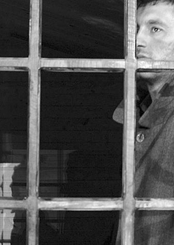Article
Voices From the Past: Work and the Permeable Walls of the Asylum
Author(s):
The history of the 19th and early 20th century asylum is a history of locking up patients . . . or so it has seemed. Since the 1950s and 1960s when the history of psychiatry first took off, scholars have generally conceded that asylums were primarily institutions of confinement.

The history of the 19th and early 20th century asylum is a history of locking up patients . . . or so it has seemed. Since the 1950s and 1960s when the history of psychiatry first took off, scholars have generally conceded that asylums were primarily institutions of confinement. While some have criticized this “great confinement” as little more than an attempt by societies to control their social deviants, others have highlighted the ameliorative and professed therapeutic dimensions of the “retreats” built during the 1800s. Proponents of both sides, however, largely left unquestioned the assumption that asylums were sites of isolation for those considered to be battling mental illness.
Thanks to recent studies, however, our image of asylums is beginning to change. Instead of seeing these facilities as imposing fortresses, new histories are showing that asylums more often than not had quite “permeable walls.” A few years ago, Graham Mooney and Jonathan Reinarz published a collection of articles1 chronicling the remarkable variety and number of individuals and groups who routinely visited asylums and hospitals in a personal or professional capacity. And Freiburg University historian Cornelia Brink published a book in 2010 in which she pointed out that “the threshold-that is, the passageway to facilities, accommodations, and release-has always been a central topic of public debate.”2(p26) In other words, the outside world was always a very real presence within asylums and mental hospitals even before deinstitutionalization.
The following excerpt from an article by the physician Herman Ostrander in 1900 illustrates this very thing.3 Ostrander worked at the Michigan Asylum for the Insane in Kalamazoo, Michigan at the time he delivered this paper before a meeting of the Association of Assistant Physicians of Hospitals for the Insane. The Kalamazoo asylum, which began operations in 1859, changed its name in 1911 to the Kalamazoo State Hospital. Ostrander became its superintendent in 1916, a position he held until 1930. The facility still exists and is now called the Kalamazoo Psychiatric Hospital.
–Greg Eghigian, PhD
The tendency of modern methods is toward the segregation rather than the aggregation of the insane. The large, massive structure where hundreds are herded together for safekeeping is slowly but surely being supplanted by the villa or cottage where the unfortunate can find a home. People are learning that home life is the most natural, the most comfortable and the most economical for the insane as well as the sane….
There is a widespread tendency in the United States to break away from the corridor- or block-plan of constructing buildings and to erect cottages around the main building. In many instances the idea of economy seems to have dominated all other ideas. The cottages are huge houses which but very faintly suggest the idea of a home. Nevertheless, it is a step in the right direction….
In a paper read before the American Medico-Psychological Association in May last, Dr. Peterson, quoting from the sixth edition of Kraepelin, 1899, says: “The construction of asylums has experienced extraordinary progress of late years by the evolution of so-called colonies in which the patients are, as far as possible, given liberty and occupation in country pursuits. The whole question of the care of the insane for a long time has probably found its solution in this best and relatively cheapest method of support” . . . In 1886 the trustees of the Michigan Asylum purchased 256 acres of land known as Brooks Farm, situated two and one-half miles north of the main buildings, to be used as a dairy farm. A cottage was constructed for the accommodation of forty-five male patients with their necessary attendants. These patients were to assist in caring for the cows and in the general farm-work. The success of the scheme and the improvement manifested by the patients exceeded the most sanguine expectations. From this as a nucleus, the colony-scheme for that asylum was projected. The plan of Dr. Palmer’s contemplated for the establishment of a colony for quiet, chronic patients in cottages each with a capacity not to exceed thirty persons, to be located in some farming-community near the main institution by which it was to be managed and from which it was receive its main supplies. The advantages by such a plan were as follows:1. It increases the means of classification, meets more fully individual necessities, and restores home-life as nearly as practicable2. It affords speedy relief; within a year provision can be made for the reception of patients. To locate, construct and organize an asylum after the plan of those established in most of our States, three or four years are required.3. It is better adapted to the class of patients for which it is intended, as it grants greater freedom and tends to cultivate habits of self-reliance.4. It provides suitable occupation for all patients able to work, so organized as to be made most remunerative to the institution. Occupation, judiciously directed, constitutes one of the most important aids to treatment.5. It affords an important change, which will exert a curative influence over patients.6. It is the most economical plan of providing for the insane, reducing materially the cost of accommodations, as well as of maintenance, without reducing essential comforts….
Ideal occupation for patients is difficult to supply in large institutions. The aggregation of a large number of persons in one building tends to the specialization of labor, and this is not conducive to the complete development of the individual. The work is such that it is done automatically and furnishes no incentive or mental stimulus. The colony-system provides each individual with a greater diversity of occupation and the character of the work is such that it tends to stimulate and to bring into healthy action every mental faculty. The intelligence with which many of our colony-patients assume and perform responsible duties is extremely interesting and gratifying.
I have a vivid and pleasant recollection of a male patient who was received at the colony somewhat depressed and confused in mind. He had been employed in the main building in wiping dishes. On consulting his clinical record I found that he had been a carpenter by occupation. There was an abundance of work at his trade available at the colony and he was placed in charge of it. He repaired all the broken furniture and did all the necessary carpenter-work about the establishment. He supervised a party of patients in the work of tearing down an old abandoned horse-barn, saved the lumber, moved part of the framework to the lake and converted it into an attractive boathouse. He converted the balance of the building into a carpenter- shop. He seemed able to repair any piece of machinery about the premises. He put a center-board in one of the boats and made a sailing-vessel of it and was seriously considering the feasibility of converting one of the yawls into a steam-yacht by utilizing an unused steam-boiler, when he was discharged as able to take care of himself. His rapid improvement dated from the time he was given suitable employment.
References1. Mooney G, Reinarz J, eds. Permeable Walls: Historical Perspectives on Hospital and Asylum Visiting. Amsterdam: Rodopi; 2009.
2. Brink C. Grenzen der Anstalt: Psychiatrie und Gesellschaft in Deutschland 1860-1980. Gttingen: Wallstein; 2010.
3. Ostrander H. The colony system of caring for the insane. Am J Psychiatry. 1900;56:443-455.






